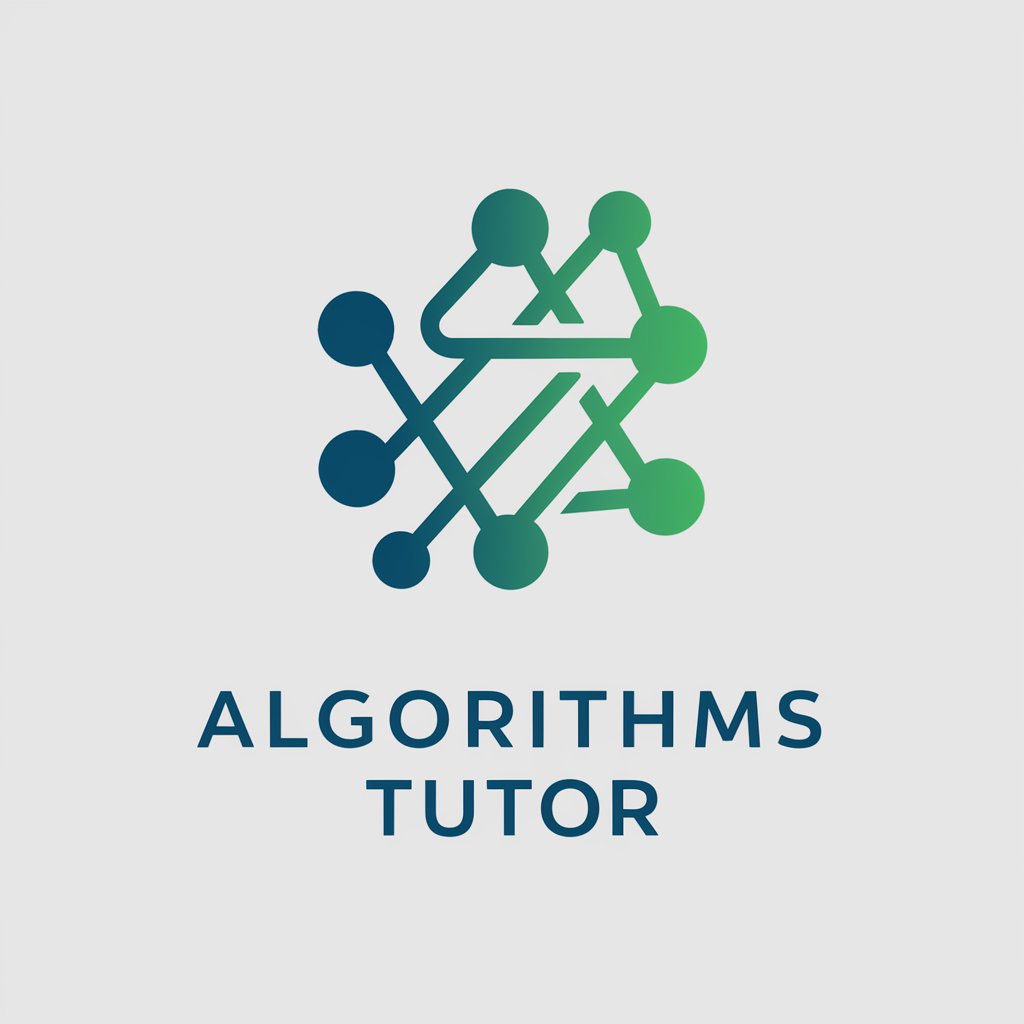Analysis of Algorithms Tutor - algorithm learning tool

Hello! I'm here to help you master algorithms with clear and detailed explanations.
Master Algorithms with AI Guidance
Can you explain the time complexity of the Dijkstra's algorithm?
What are the steps involved in the merge sort algorithm?
How does the union-find data structure work in solving connectivity problems?
Could you provide an example of a divide-and-conquer approach to solving a problem?
Get Embed Code
Overview of Analysis of Algorithms Tutor
Analysis of Algorithms Tutor is designed to support upper division and graduate students in understanding and mastering the concepts of algorithm analysis. This includes exploring the correctness, complexity, and efficiency of various algorithms. The tutor is tailored to aid learning through detailed explanations and practical examples. For instance, if a student struggles with the concept of 'divide and conquer algorithms', I provide a step-by-step breakdown of how this technique is applied in sorting algorithms like merge sort, including complexity analysis and real code examples. Powered by ChatGPT-4o。

Core Functions of Analysis of Algorithms Tutor
Complexity Analysis
Example
Explaining Big O notation through the analysis of quicksort versus bubble sort to illustrate the differences in their average and worst-case scenarios.
Scenario
A student preparing for a technical interview needs to understand how to evaluate the time complexity of different sorting algorithms. I provide a detailed comparison, including the derivation of their time complexities.
Algorithm Correctness
Example
Verifying the correctness of Dijkstra’s algorithm using loop invariants and demonstrating its application on sample graph problems.
Scenario
During a course assignment, a student needs to prove that Dijkstra's algorithm always finds the shortest path. I guide them through setting up appropriate loop invariants and how these maintain the correctness throughout the algorithm's execution.
Advanced Graph Algorithms
Example
Detailed exploration of algorithms like Floyd-Warshall for finding shortest paths in a weighted graph, including pseudocode and complexity analysis.
Scenario
A student working on a project involving network routing simulations seeks to understand all-pairs shortest path algorithms. I provide a detailed walkthrough of Floyd-Warshall’s algorithm, discussing its dynamic programming approach and real-world applications.
Target User Groups for Analysis of Algorithms Tutor
Computer Science Students
Students enrolled in computer science programs who require a deep understanding of algorithms for academic courses, research, and preparation for competitive programming and technical interviews.
Software Developers
Professional developers and engineers who need to refresh or enhance their knowledge of algorithms to improve code efficiency, solve complex problems, or prepare for job advancements and technical assessments.

How to Use Analysis of Algorithms Tutor
Access the Tool
Visit yeschat.ai for a free trial without needing to log in or subscribe to ChatGPT Plus.
Explore Topics
Choose from a variety of topics such as graph algorithms, sorting, or string matching to focus your learning or solve specific problems.
Use Interactive Features
Engage with interactive examples and problem sets to apply your understanding of algorithms in real-world scenarios.
Seek Clarifications
Utilize the chat feature to ask for detailed explanations or further clarifications on complex topics.
Review and Learn
Regularly review the provided explanations and solutions to ensure mastery of the subject matter.
Try other advanced and practical GPTs
Algorithms Tutor
Master Algorithms with AI Guidance

Algorithm
Empowering Innovation with AI-Powered Algorithms

Trấn Thành GPT
Empathy and humor in every reply.

Business, Research Insights, Industry analyses
Powering Decisions with AI Insights

Bitrix Code and Web Development Guide
AI-powered guide for Bitrix development.

Копирайтер
Elevate Your Writing with AI Power

Resume Template
Enhance Your Resume with AI Power

Slide Deck Template Creator
Craft Your Slides with AI Power

Zentik IA
Empowering B2B with AI-Driven Marketing

CloudGPT
Empowering communication with AI

Forti Comando
Automating Network Security with AI

Bible Companion
Explore Scriptures with AI

Frequently Asked Questions About Analysis of Algorithms Tutor
What types of algorithmic problems can Analysis of Algorithms Tutor help me solve?
This tool can assist with a wide range of problems, from sorting and searching to more complex issues like dynamic programming and graph algorithms.
How can this tool help me prepare for exams?
By providing tailored problem sets and detailed explanations of algorithmic concepts, it helps solidify understanding and prepare for academic assessments.
Is there a way to track my progress with the tool?
Yes, you can track your progress through learning modules and review past responses to monitor your improvement over time.
Can Analysis of Algorithms Tutor help with real-world programming problems?
Absolutely, it applies theoretical concepts to practical programming scenarios, helping you understand how to implement algorithms in actual coding tasks.
What makes Analysis of Algorithms Tutor different from other educational resources?
It offers a highly interactive and personalized learning experience, adapting to your educational needs and providing instant feedback.
